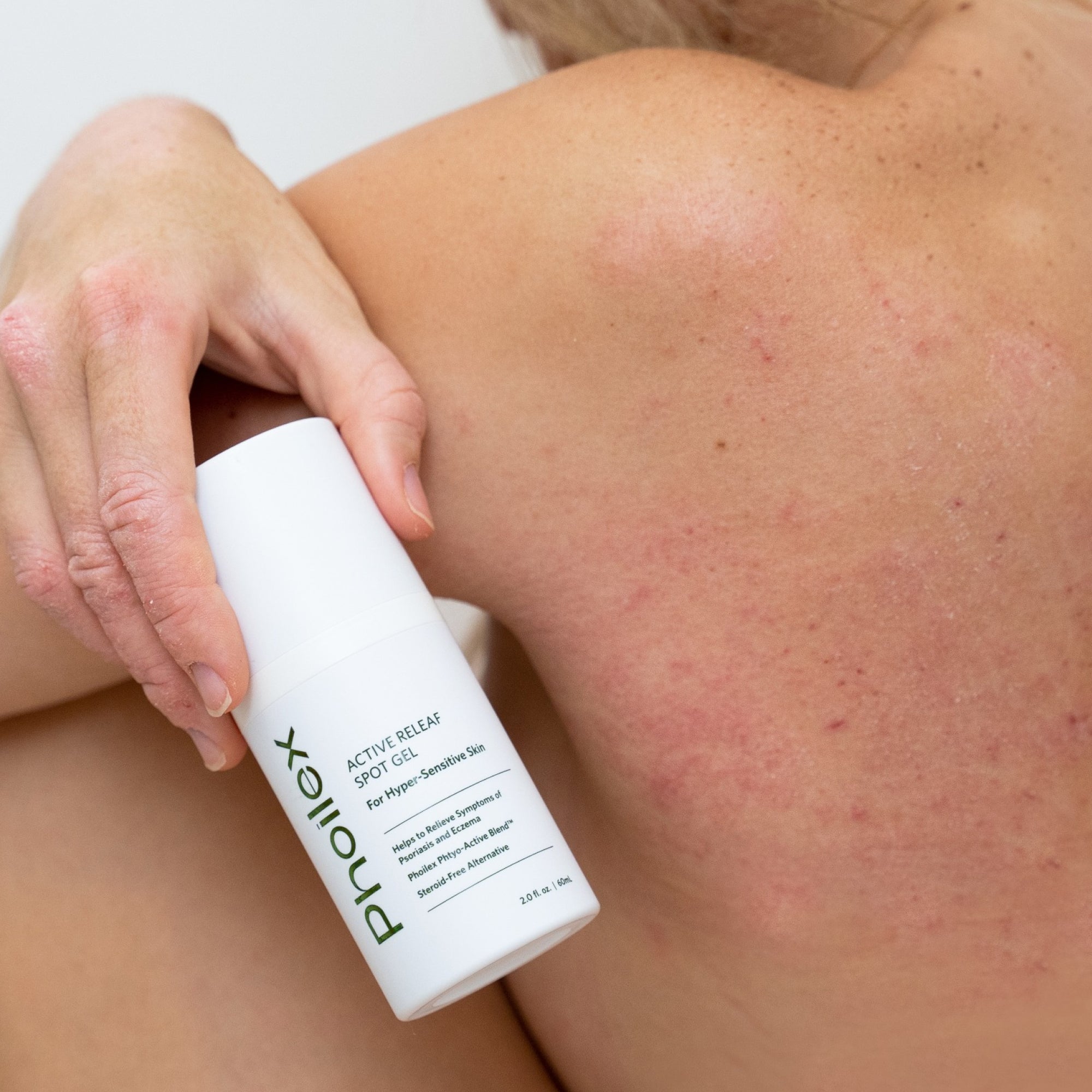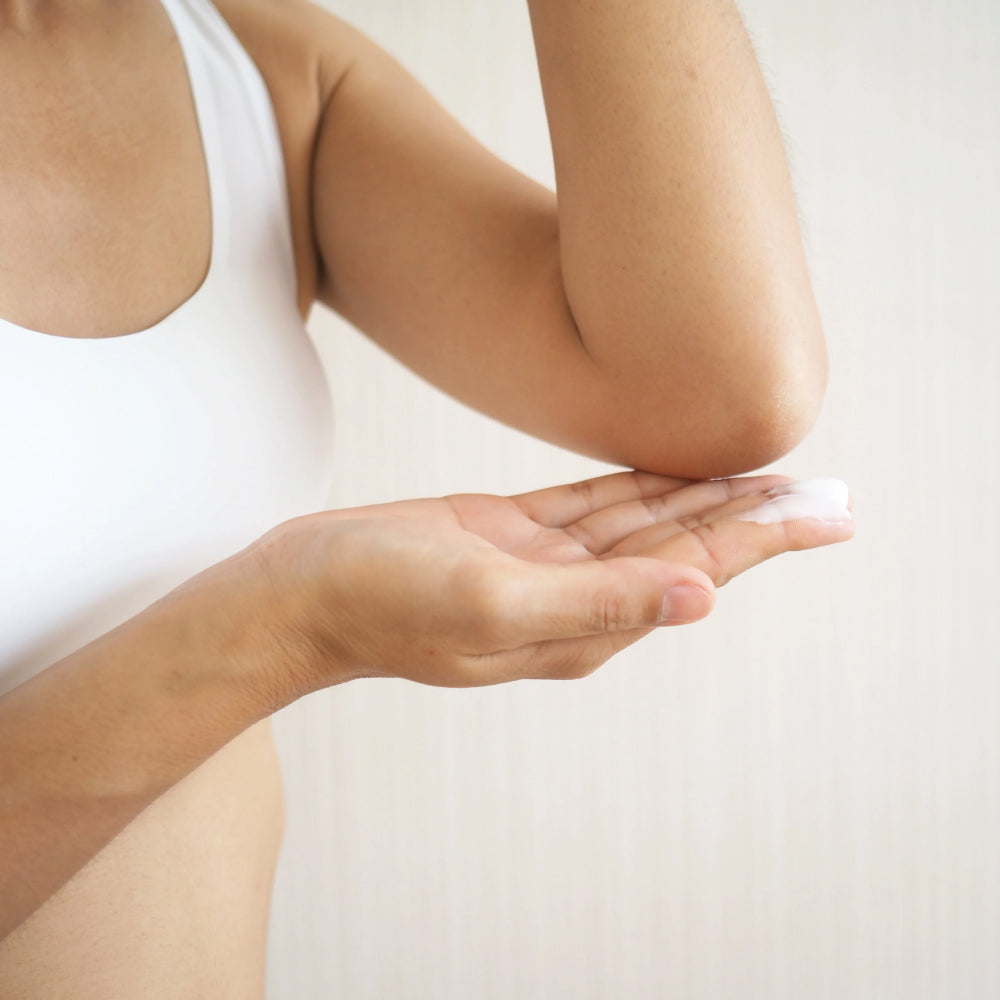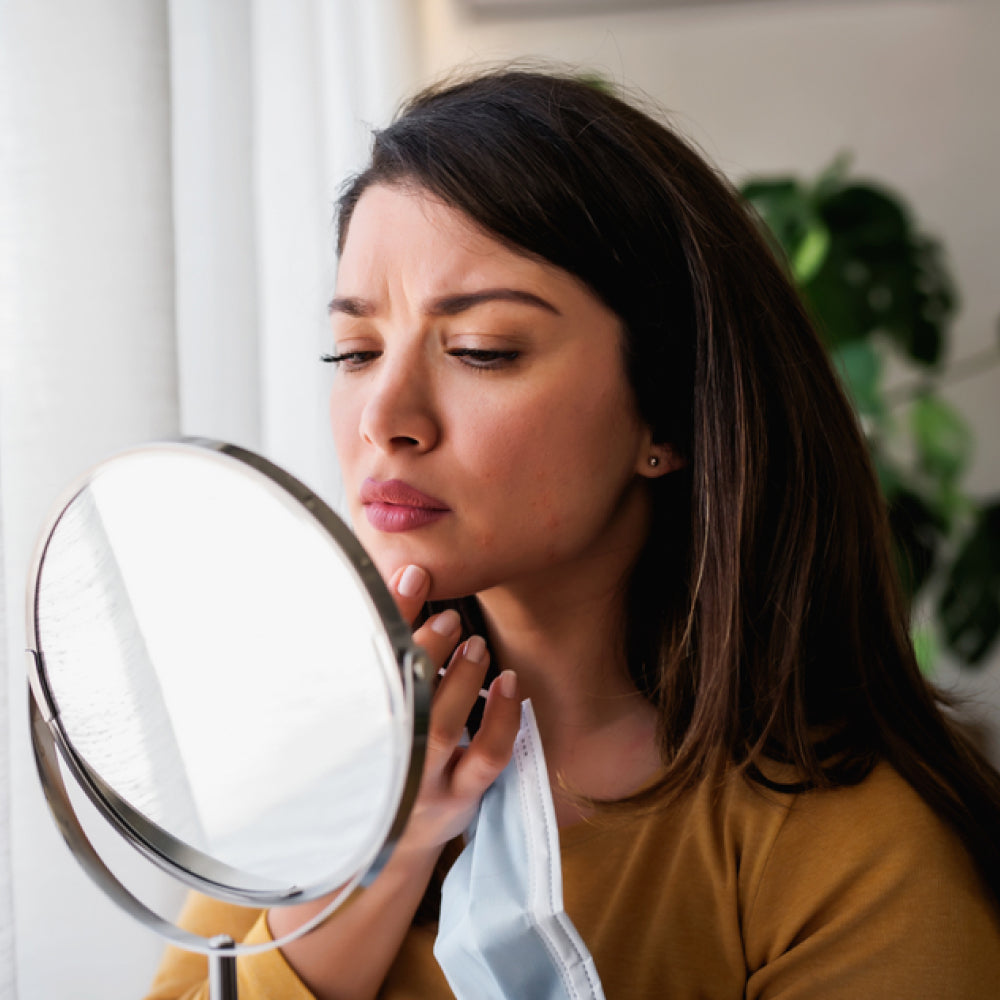Your skin is not resting when you sleep, it is working overtime. While you drift off, your body ramps up cellular repair, collagen production, and barrier recovery. When sleep is short, irregular, or constantly interrupted, that “night shift” never gets fully done. The result: more redness, slower healing, dullness, and flare-prone skin, plus a mind that never quite feels settled. This guide walks you through how sleep and skin interact and gives you a practical, step by step nighttime routine to support both.
A Simple Night Routine with Phoilex
If you prefer a minimal, barrier supportive routine, a structured set can make consistency much easier. A three step Phoilex routine is a good example:
Start by calming surface irritation with the Active Releaf Spot Gel, support mind body regulation before sleep with Liverty Dynamic Drops, and finish with the Releaf & Recover Set to nourish the barrier overnight. This keeps the routine simple but effectively soothing inflammation, preparing the nervous system, and supporting the skin’s natural night repair cycle without overwhelming products or steps.
What is your skin’s “night shift” and why does it matter?
At night, your skin switches from “defense mode” (fighting UV, pollution, and friction) to “repair mode.” Blood flow to the skin increases, growth factors and collagen synthesis ramp up, and your barrier works to recover from the day’s stress. Much of this is driven by your circadian rhythm, the internal 24 hour clock that coordinates hormones, temperature, and cellular activity.
During deep sleep specifically, your body:
-
Repairs DNA damage from UV and pollution
-
Produces collagen and elastin to keep skin firm and resilient
-
Normalizes skin pH and transepidermal water loss (TEWL)
-
Regulates inflammatory mediators that influence redness and flares
Clinical research shows that when sleep quality is chronically poor, intrinsic aging signs increase and barrier function declines. Over time, that shows up as dryness, fine lines, dullness, slower wound healing, and more reactive skin.
Is “beauty sleep” actually real, or just a myth?
Short answer: yes, beauty sleep is real and measurable.
In a well known clinical study, women with chronic poor sleep had more signs of intrinsic aging, diminished skin barrier function, and lower satisfaction with their appearance compared with good sleepers.
A separate dermatology review on sleep deprivation and the skin explains how insufficient sleep disrupts hormone release (like growth hormone, cortisol, and melatonin) and inflammatory markers, which collectively undermines skin integrity and worsens skin diseases. Taken together, “beauty sleep” is not a fluffy phrase it is a useful shorthand for the deep, nighttime repair work your skin can only complete when sleep is long enough and continuous enough.
How does poor sleep hit sensitive, eczema prone, and psoriasis prone skin?
If your skin is already reactive, sleep issues can feel like pouring fuel on the fire.
Research shows:
-
Sleep deprivation and skin disease have a bi-directional relationship: poor sleep worsens inflammatory conditions, and those conditions themselves disrupt sleep.
-
Atopic conditions like eczema are strongly associated with nighttime itch and frequent awakenings, which further break down the barrier and worsen inflammation
In real life, that can look like:
-
More frequent and intense eczema or psoriasis flares
-
A stronger itch scratch cycle in the middle of the night
-
Higher daytime fatigue and irritability, which can trigger more stress related skin changes
Breaking the loop means caring for both sides: calming inflammation at the skin level and improving sleep hygiene and nervous system regulation at the same time. This is where an anti-inflammatory routine becomes powerful resources like Anti-Inflammatory Skin Care: Natural Solutions for Skin Calm show how soothing topicals and lifestyle changes (including better sleep) work together to reduce flare frequency.
For targeted nighttime flare control, a fast calming formula like Active Releaf Spot Gel can help reduce redness and soothe hotspots before they escalate during sleep.
What does “sleep hygiene” actually mean for both skin and mind?
Sleep hygiene is simply the set of behaviors and environmental tweaks that make it easier to fall asleep, stay asleep, and cycle through deep and REM sleep.
Common evidence based sleep hygiene habits include:
-
Going to bed and waking up at roughly the same time every day
-
Limiting caffeine for at least 6 hours before bed
-
Avoiding heavy, spicy meals 3–4 hours before bedtime
-
Reducing bright screens in the hour before sleep
-
Keeping the bedroom cool, dark, and quiet
Many of these recommendations are summarized in Harvard Health’s guide to sleep hygiene, which emphasizes routine, light control.
The World Sleep Society’s tips for healthier sleep in adults add further practical advice: regular bed and wake times, keeping naps short, limiting alcohol and caffeine in the evening, and exercising regularly but not right before bed.
For your skin, good sleep hygiene means:
-
Longer stretches of deep slow wave sleep, when repair processes peak
-
Lower nighttime cortisol, which can otherwise increase inflammation and delay healing
-
Fewer half-awake scratching episodes that physically damage the barrier
You can think of sleep hygiene as giving your skin’s night shift a quiet, predictable workplace with no emergency alarms. Many people also support this transition with internal calming aids; Liverty Dynamic Drops can be a gentle addition to help settle the mind before bed and encourage deeper rest.
Key nighttime skin and sleep entities at a glance
|
Entity |
What it is? |
Why it matters for night repair? |
|
Melatonin |
Hormone that rises at night, promotes sleep |
Antioxidant role; may support skin repair and UV defense |
|
Cortisol |
Stress hormone with a 24 hour rhythm |
Elevated at night can worsen redness, itch, and flares |
|
TEWL |
Transepidermal water loss |
Higher TEWL = leakier barrier and more dryness |
|
Collagen synthesis |
Production of structural skin protein |
Peaks during sleep; key for firmness and healing |
|
Circadian rhythm |
Internal 24 hour biological clock |
Misalignment disrupts repair, barrier, and inflammation |
|
Deep sleep (N3) |
Slow wave, restorative sleep stage |
Critical window for tissue repair and immune modulation |
Conclusion: Treat your night like skin therapy, not an afterthought
Your skin has a night job: repairing damage, restoring the barrier, and recalibrating inflammation. Quality sleep is not a luxury in that process it is the workbench. By pairing evidence based sleep hygiene with a simple, barrier supportive skincare routine and an anti-inflammatory lifestyle, you create the calm, predictable environment your skin and mind need to heal.
You do not have to overhaul everything at once. Start small: dim the lights earlier, protect your barrier with a gentle three -step routine, and keep your phone out of reach in bed. As these habits stack up over weeks and months, you are likely to notice not just calmer, more resilient skin, but also a steadier mood and more energy for your days.
Read more

Cold air, low humidity, indoor heating, and subtle shifts in your routine all combine to stress an already sensitive skin barrier, making flares more frequent and more intense.

Fungal infections on the skin are extremely common and affect millions of people every year. Although most infections are not dangerous, they can cause intense discomfort, persistent itching, irrit...
